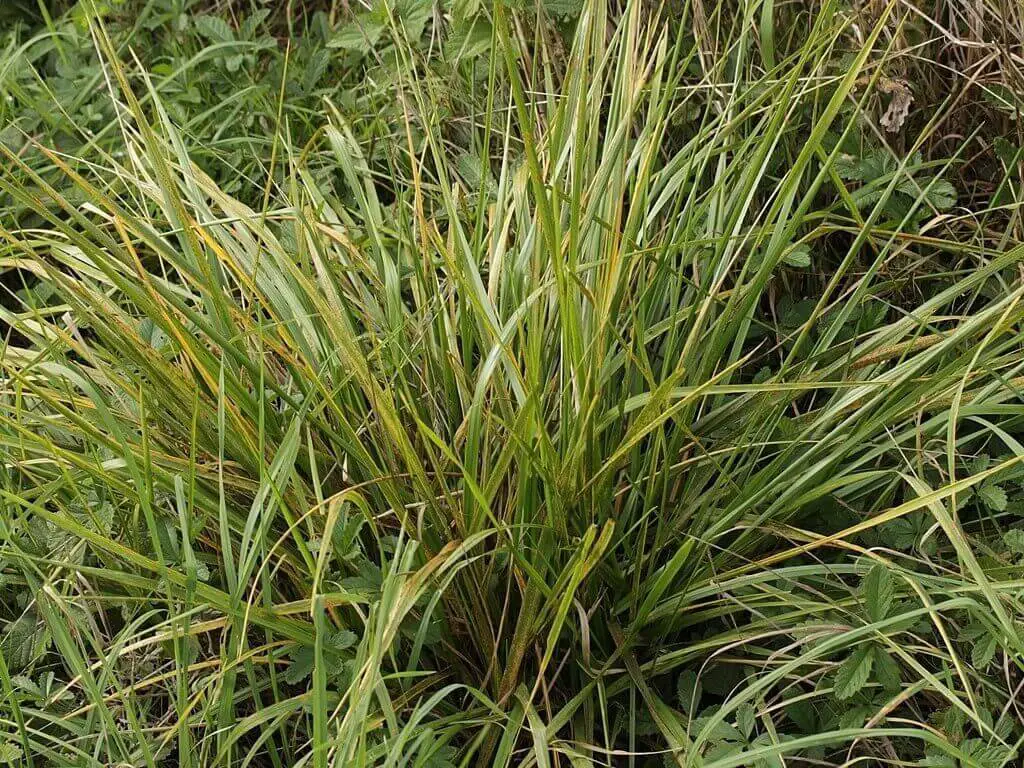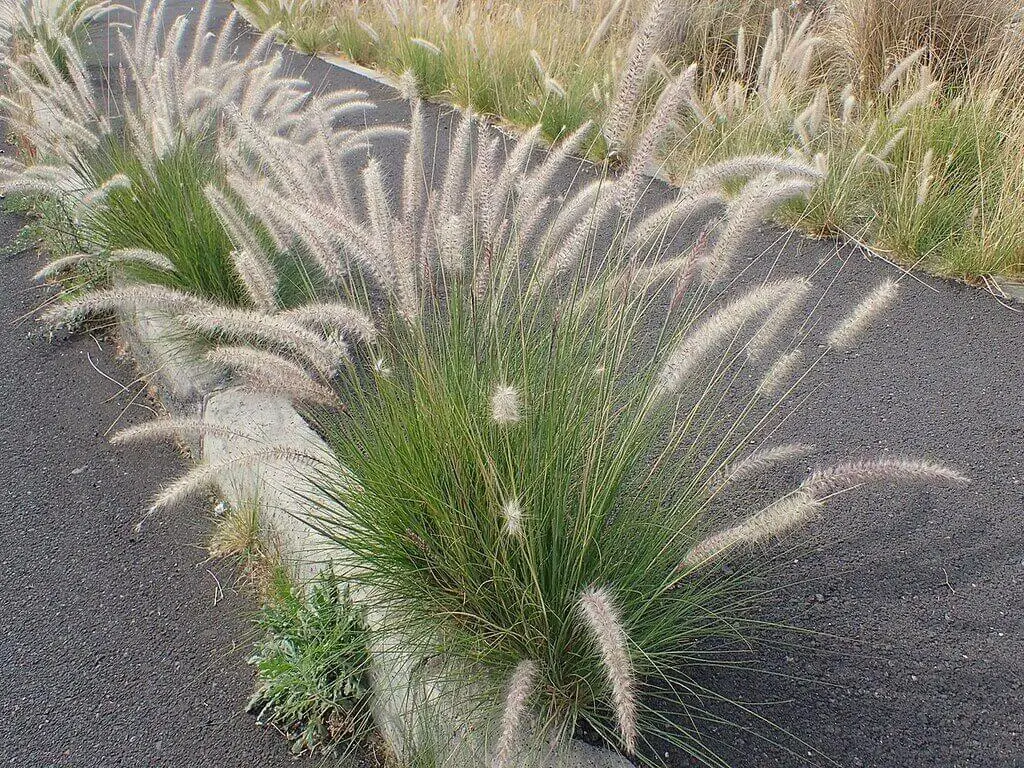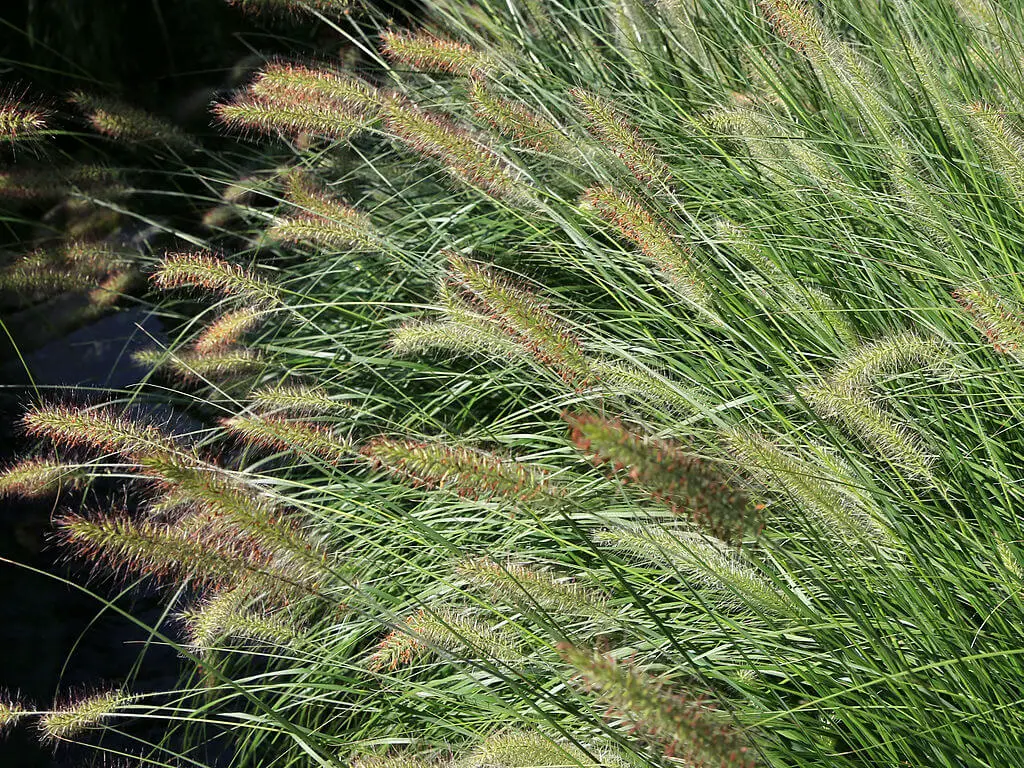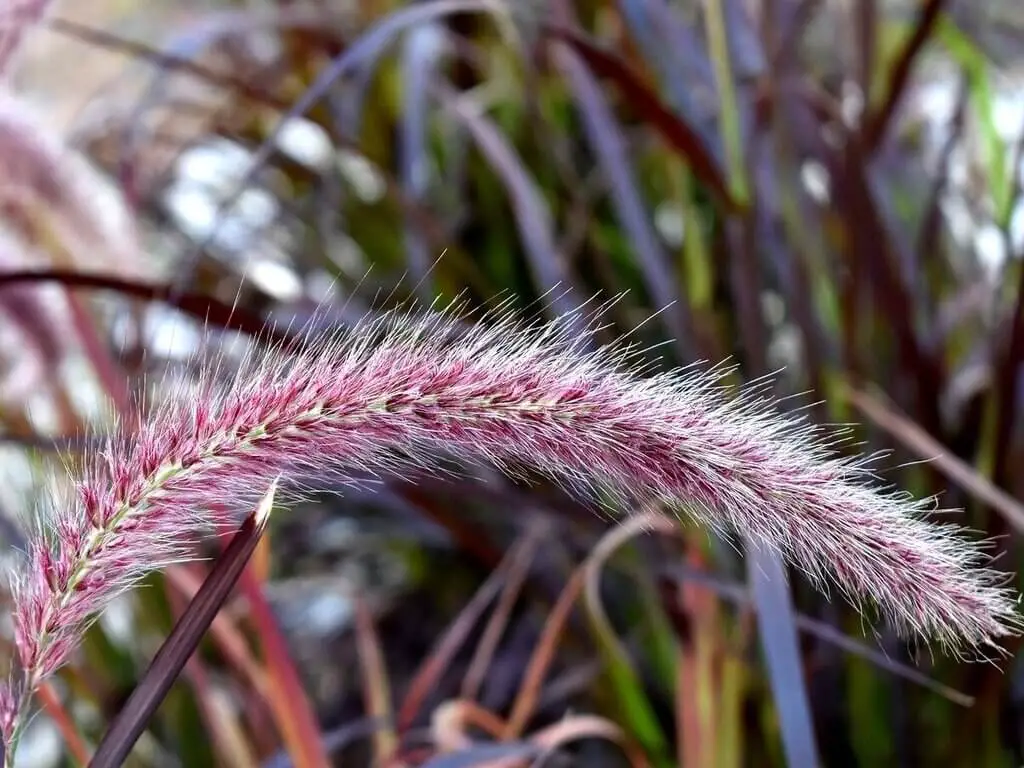Growing and Caring Purple Fountain Grass
Purple fountain grass (Pennisetum X Advena Rubrum) is biologically an ornamental plant. It is also a fast-growing tropical perennial with notable drought-tolerant characteristics. It is not a cold-hardy plant. Hence, if you live in cold regions, you can enjoy its ornamental nature for just two seasons in a year.
This article focuses on Purple fountain grass, its propagation, caring, varieties and uses.
Typically, purple fountain grass grows 5 feet tall and 5 feet wide. It forms clumps at the base. It also has plumose, arching flower spikes. These spikes have beautiful purple flowers. The leaves are usually long and have a burgundy color.
Some botanists classify this plant as a hybrid cross of Pennisetum macrostachys and Pennisetum setaceum. Hence, they named this plant Pennisetum x advena ‘Rubrum.’
Table of Contents
History
Purple fountain grass is native to open lands and scrubby habitats of south-western Asia, the Middle East, tropical and east Africa.
In the US, these plants are introduced in Hawaii (1914) and in Arizona (1940) as gardening and ornamental plants.
Some of the Pennisetum species are naturally invasive. But other cultivars, are non-invasive and sterile. For example, ‘Rebrum’ cultivar is sterile and needs some care to grow healthy.
Purple Fountain Grass – Propagation

Photo by John Tann (Wikimedia Commons) (CC BY 2.0)
These plants grow well in USDA zones 9-11. However, these plants can thrive in many types of soils and varying climates. Start the propagation in spring, for the best results.
Seeds
Being sterile, these plants seldom develop healthy seeds. However, some growers adopt modern advanced techniques to strengthen’ the seeds. You can purchase the seeds form online stores like Amazon or any leading nurseries.
Select a sunny location. Plant the seeds at least 1/2 inch deep in well-draining soil. To support the growing requirements, make sure to distance the seeds by at least 5 feet. Water the plants regularly. Do not overwater so as to cause waterlogging.
Alternatively, you can grow them indoors in planting trays. After they sprout two sets of true leaves, transplant them in large containers or outdoors gardens. These are hardy plants. Still, feeding them twice a month will replenish fresh energy in them. This helps to enhance their ornamental looks.
If you live in cold areas, overwinter these plants indoors. After the frosty winters pass away and temperatures begin to raise, expose them outdoors.
Live Plants
You can also purchase live plants from nurseries or online stores like amazon. This is the easiest way to grow Purple fountain grass. This method requires minimal labor hours and the success ratio is also comparatively high.
As you prefer, you can grow them in containers or transplant them to gardens. For better results, feed them twice a month with organic matter and water regularly.
Divisions
During the flowering season, the plants spend most of their energy to develop fresh leaves and flowers. Hence, forcing them to divert some of their energy to develop roots is not recommended. So, avoid dividing the plants in this season.
Generally, the plants go through immense stress while dividing them. Most plants including purple fountain grass start to grow fresh in the spring. Hence, dividing them in spring helps the regrowth with fresh energy.
Before dividing, make sure that the grass is large enough. The plants must be divided into at least 3 – 4 potions.
Water the plants regularly for a couple of days before dividing. This makes the soil moist. After that, you can dig out the plants easily.
First, establish a dripline around the plant. Dripline is the approximate extension of roots sideways around the plant. It can be determined by the width of the plant.
Along the drip line, step a sharp shovel into the soil and push it diagonally under the root ball of the plant. Then, lever the shovel multiple times. This loosens the root ball. After that, you can pull it out of the soil with bare hands easily.
Using a sharp garden knife, or shovel, split the root ball into several sections. Make sure each section has a few root tubes and stems.
For planting the divisions, select a space with abundant sunlight. Amend the soil with organic matter like compost, worm castings etc., Then, dig a hole twice as deep as the root balls width.
Before planting, apply bone meal to the division. Then place it in the hole in upright position. Fill the hole back with the soil and water thoroughly.
In the initial stages, water the plants regularly. But do not make the soil soggy.
Pruning Purple Fountain Grass

Generally, the pruning season for most of the pant including Purple fountain grass is late winter or spring. In this season, most plant have fresh growth, replenished with fresh energy.
Pruning periodically facilitates air flow around the plants. In fact, this is essential to prevent many common diseases among the plants. It also exposes the inner parts of the plants to the sunlight and gives the plants a culture look’.
While performing any garden activity, we recommend you to use quality garden gears and sterilized garden tools. This ensures the safety of both plants and human
Pests and Diseases

Photo by Björn S (Wikimedia Commons) (CC BY-SA 2.0)
Typically, the purple fountain grass is a pest and disease resistant plant. Hence, pests and diseases rarely bother these plants.
In wet-warm conditions, plant rust disease may infect these plants. This disease first appears as tiny yellow spots on the leaves. Then, it gradually develops into raised portions with reddish-brown shade.
You can treat this disease effectively with fungicidal sprays. Spray the fungicide liquid directly on the infected portions in the morning. Repeat the process until the rust vanishes.
Generally, you can prevent this disease by pruning the plants periodically. This prevents most of the common plant diseases including rust.
While watering, aim at the base of the plants. Water the plants in the early mornings. This gives plants enough time for drying, making use of afternoon heat, before the cool evenings arrive. In any case, make sure not to overwater the plants. It may cause waterlogging which in turn attracts various diseases.
We recommend drip or trickle watering systems for watering the plants. In addition to water conservation, these systems can help to regulate the soil moisture as needed.
Varieties of Purple Fountain Grass
Pennisetum Setaceum ‘Fireworks’

Photo by Krzysztof Ziarnek, Kenraiz (Wikimedia Commons) (CC BY-SA 4.0)
This is another popular cultivar of this species. It also has many other names including Chinese fountain grass, dwarf fountain grass, swamp foxtail grass, and foxtail fountain grass.
This variety has variegated (bi-color) leaves. The inner middle portions of the leaves have dark red-brown (burgundy) shade. The outer edges are bright pink in color. Normally, this cultivar grows 3 – 6 feet tall and 1 – 3 feet wide. This variety thrives better in USDA Zones 9-10.
Pennisetum Alopecuroides

Photo by Unukorno (Wikimedia Commons) (CC BY 4.0)
This is another common variety that grows better in USDA Zones 5-9. This perennial plant is more common in the US Northern regions. This variety is further classified into two types as mentioned below:
Pennisetum Alopecuroides – Burgundy Bunny
This plant can grow 16 inches tall and 16 inches wide. The flower heads have a light brownish yellow shade (buff color). Being red in summer, the foliage turns deep reddish-purple in the fall.
These changing colors are the main attractions of this plant. Many gardeners love this variety for its distinct looks.
Pennisetum Alopecuroides – Little Bunny
This plant is actually a dwarf variety of the above mentioned (Burgundy Bunny) cultivar. Normally, this variety grows 12 inches tall and slightly more than 12 inches wide. The flower heads of this plant also have a light brownish yellow shade (buff color).
However, the foliage color does not change with season as the other variety. Most gardeners’ interplant this cultivar with other ornamental plants. This variety can be used as filler plants also.
Purple Fountain Grass – Uses

You can grow purple fountain grass both as standalone specimens and mixed plants. In container gardens, these plants provide striking looks, particularly when interplanted with other ornamental plants.
You can also mass plant them to fill your spaces beautifully. When you mix them with other coarse-textured plants, they never fail to provide striking looks. They also suite well as border plants or privacy screens when planted together in mass.
Like maiden grass, these plants decorate fall flower gardens beautifully. As an arrangement, plant these grasses in front of ornamental plants like oakleaf hydrangea. Grow shorter plants like blue fescue and annual lobelia in the frontier. The contrasting beautiful colors will be a treat to eyes!
You can also use the feathery seed heads (sliced plumes) for dry flower arrangements in vases, frames and other decorations.
Final Thoughts
Purple fountain grass is easy to grow and care. Beautifying your spaces, gardens and floral arrangements, these ornamental plants are a nature’s gift indeed! In warmer zones, you can enjoy them almost throughout the year. At least shining in a couple of seasons, these drought tolerant plants can make you happy in cooler zones too!
Just try growing them once, you will never regret. Maybe you have to travel a bit to purchase them. But it is worth as the plants beautiful looks are just a treat to watch!
Similar posts
Growing Mexican White Oak (Monterrey Oak) Trees
Growing Gopher Plants

